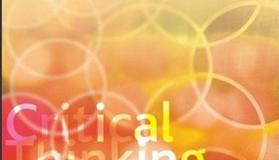Skill 10: Comparing IndependentReasons with Joint Reasons
If an author gives two or more reasons to support aconclusion, these may be either joint reasons or independent reasons.
Joint reasons: Reasons connectedin some way and mutually reinforce each other.
Independent reasons: Reasons may bevalid in each own right but have nothing to do with the other reasons given.
Study the following examples, identify whetherjoint or independent reasons are used to support the conclusion. Then evaluatewhich argument is strongest, and which is weakness, and give your reasons.
Example 1:
It is important that employers in Britain activelyencourage older people to remain within the work-force. First of all, as thepopulation ages, there won’t be enough young people entering the work-force tomeet the needs of the economy. Secondly, the economy benefits from the skillsand experience that older people have accrued over their lifetimes. Moreover,older people often have rare skills and useful attitudes that cannot be taughtor acquired quickly.
Example 2:
Itis important that employers in Britain actively encourage older people toremain within the work-force. Older people often have rare skills and usefulattitudes that are wasted when they leave the work-force early. Moreover,staying on longer in full-time or part-time work is believed to be good for thehealth. Besides, it is unrealistic to expect savings and pensions to besufficient to meet the needs of people retired for 30 years or more.
Example 3:
It is important that employers in Britain activelyencourage older people to remain within the work-force. Firstly, older peoplehave a right to a better standard of living. Secondly, many of them willemigrate if they do not remain active here. Thirdly, older people like to meetyounger people and rarely get the opportunity outside of the workplace.
Activity: For each of the passages below, identify whether joint or independent reasons are used tosupport the conclusion. The conclusions are written in italics.
Passage1:
Expeditions leave behind a range of litter, brokenequipment and other unwanted items that are gradually ruining the landscape.Few useful discoveries result from the vast numbers of expeditions now takingplace. Furthermore, local economies are distorted by the requirements ofexpedition teams. Expeditions are sometimes unsafe and survival cannot beguaranteed. Therefore the number ofexpeditions to the Arctic should be greatly reduced.
Passage2:
Telling lies is sometimes justifiable. Lies can be hurtful, but the truth can hurt even more. People do not always need to hear thetruth – a fantasy can sometimes provide a practical coping mechanism fordealing with difficult circumstances. Moreover, it isn’t clear what constitutesthe “truth”. For example, exaggeration is a form of lie but it also holdssomething of the truth. Lies are an important part of social bonding: we lie tomaintain friendships and to keep social situations harmonious.
Passage3:
Knowledge management is increasingly important for business. Without it, resources are wasted. For example, companies often make pooruse of the training and experience of their staff, failing to cascade it totheir other employees. Furthermore, businesses that do not manage knowledgewell may appear less up-to-date, and therefore less attractive, to potentialcustomers. With the growth of electronically accessible information, businessesneed strategies to help staff cope emotionally with information overload.
Passage4:
It took a long time for the world to appreciate theart of Magritte because he gave the public so few clues about how to interprethis work. His art calls heavily upon the unconscious, but he steadfastlyrefused investigation into aspects of his own life that might have helpedothers to understand the workings of his own unconscious. He refused to talkeven about the basic events of his early life. As he didn’t agree withinterpretations of art based on personal problems and experiences, he offeredlittle to encourage public interpretations of that nature.


